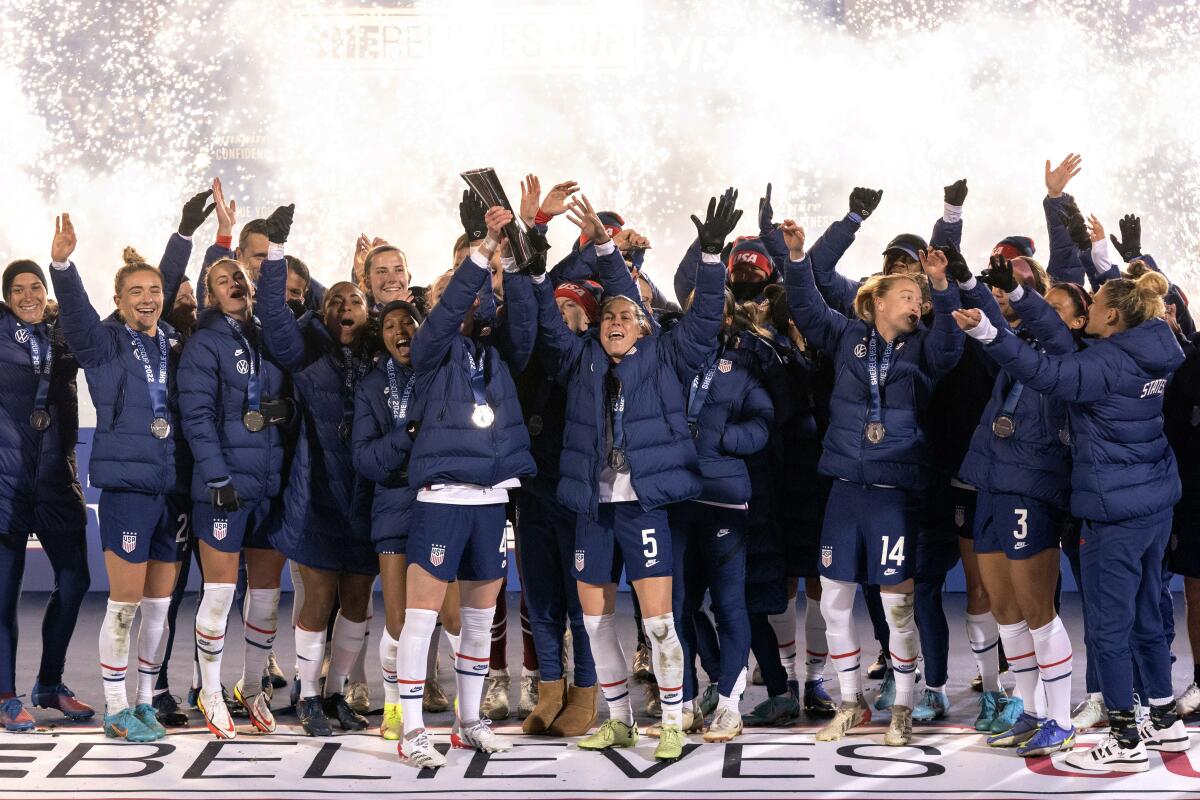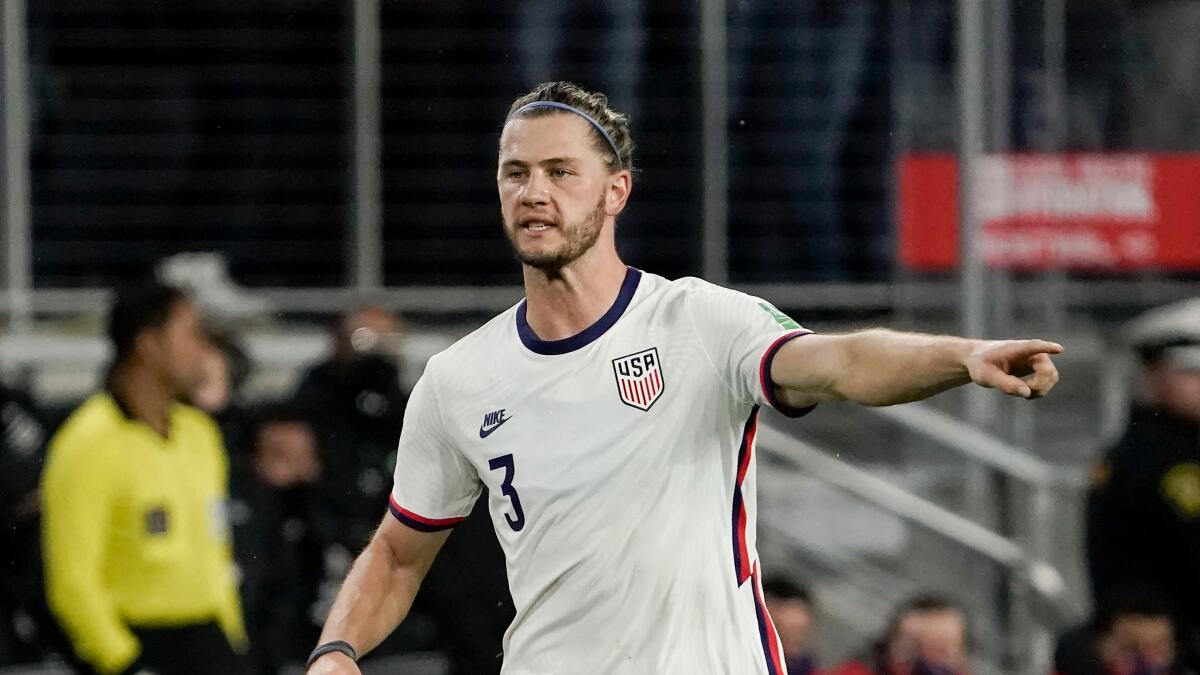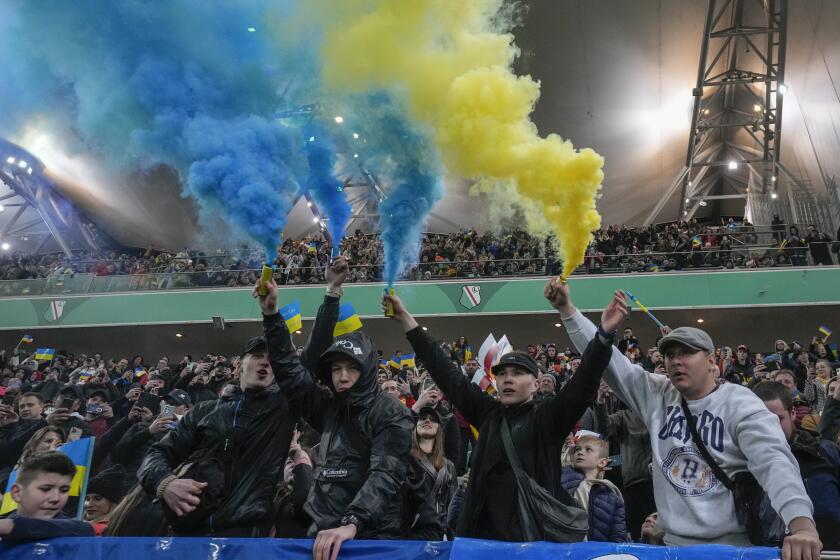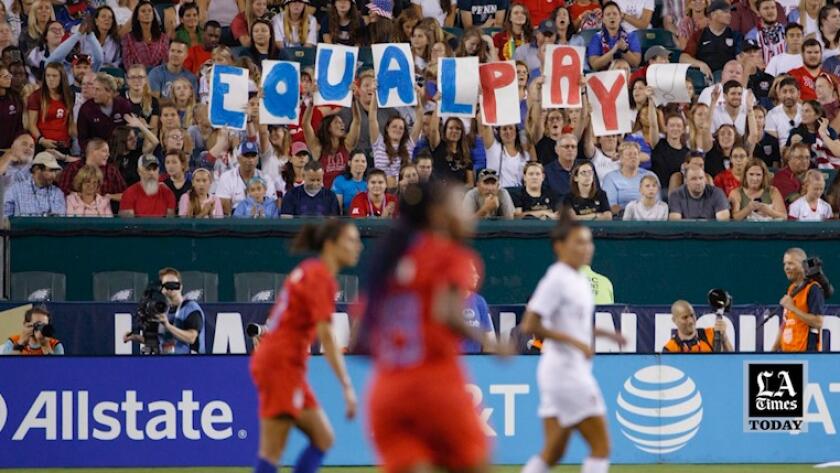U.S. Soccer achieves equal pay goal, splitting World Cup revenue evenly between men, women

- Share via
U.S. Soccer has agreed to separative collective bargaining agreements with its men’s and women’s national teams that will guarantee equal pay for players on both sides, likely ending the six-year legal fight between the women’s squad and the federation over salaries and working conditions.
“This is a truly historic moment,” U.S. Soccer President Cindy Parlow Cone said. “These agreements have changed the game forever here in the United States and have the potential to change the game around the world.”
Under the agreements, which run through 2028, members of both national teams will be paid equally for all competitions, including their respective World Cups. For friendly games, men’s and women’s players will get identical roster bonuses and performance payments based on the outcome of the match and the world ranking of the opponent. The teams will split broadcast, partner and sponsorship revenues 50-50 as well.
The federation also agreed to provide equality in venues and playing fields, in accommodations at games and training camps, in charter flights and in staffing.
“It’s a big accomplishment to arrive at a structure all sides could accept, even though the devil is always in the details in these kinds of deals,” said Steven A. Bank, the Paul Hastings professor of business law at UCLA.
The Galaxy and LAFC have some of the highest team payrolls in the MLS while Javier “Chicharito” Hernández is the second-highest paid player in MLS.
But the groundbreaking part of the two CBAs involves World Cup prize money. The U.S. received $9 million from FIFA for reaching the round of 16 in the 2014 World Cup, the last it played in, while the women received $4 million for winning the Women’s World Cup in 2019. Under the newly ratified CBAs, all that money would go into one pot and, after the federation subtracted its cut, would be divided equally among the players on the two teams.
“There’s many models you could have taken to equalize World Cup prize money. This is just the one that we landed on,” said Becca Roux, executive director of the women’s national team players’ association.
No other national federation has agreed to such a far-reaching revenue-sharing formula.
“We had conversations, hard conversations, to get to where we were to where we are now,” said Walker Zimmermann, a men’s national team defender and a member of the players’ union’s leadership group. “But it’s something that we all looked at and are extremely proud of: to be the first country that has done this, to equalize, across the board, economic terms and prize money.
“We saw it as an opportunity to be leaders in this front and join in with the women’s side and U.S. Soccer. We’re just excited that this is how we were able to get the deal done.”

What the women’s team loses is the guaranteed salaries of $100,000 that U.S. Soccer paid to the top 16 players in the national team pool last year. Since 2005, every CBA the women have negotiated with U.S. Soccer has included a version of that basic salary structure in recognition of the low wages many women’s professional teams paid. But with salaries spiraling in Europe and with the domestic NWSL now operating under a new CBA of its own, national team players felt comfortable moving away from the old model.
“We progressed. We’ve outgrown some of the conditions that may look like we have lost something,” said Midge Purce, a forward with the national team and with Gotham FC in the NWSL. “Our league is actually strong enough where now we don’t need as many guaranteed contracts. We can be on a more of a pay-to-play model.”
The men have been working without a labor contract since 2018 while the women’s deal expired in March. Although the two CBAs, hammered out at the same negotiating table, have been agreed to by the respective players’ associations and the federation’s board of directors, it does not necessarily end the equal-pay lawsuit the women filed against the federation. In February, the two sides reached an agreement on a settlement that included a $24-million payment from the federation to the players and was contingent on a promise to equalize pay between the men’s and women’s teams.
This week’s ratification of a new CBA would appear to have met those conditions, but it must still be approved by the court and the players who filed the lawsuit.
For Cone, re-elected in March to a four-year term as U.S. Soccer president, the CBA agreements end a two-decade fight for equal pay that began when she was a World Cup-champion player in 1999.
Ukraine’s national soccer team is being cheered by much of the world as it pushes for a berth in the World Cup.
“When I took over the presidency, this was something I wanted to lead on. To be the first country to come to terms with both the men’s team and the women’s team and their [players associations] to equalize World Cup prize money and equalize everything, every economic term of the contract,” she said. “I’m just so proud that we we’ve got to this moment. There were moments when I thought it was all going to fall apart and then it came back together. And it’s a real credit to all the different groups coming together, negotiating at one table.
“The real turning point was when we finally were all in the same room, sitting at the same table, working together and collaborating to reach this goal.”
- Share via
Watch L.A. Times Today at 7 p.m. on Spectrum News 1 on Channel 1 or live stream on the Spectrum News App. Palos Verdes Peninsula and Orange County viewers can watch on Cox Systems on channel 99.










